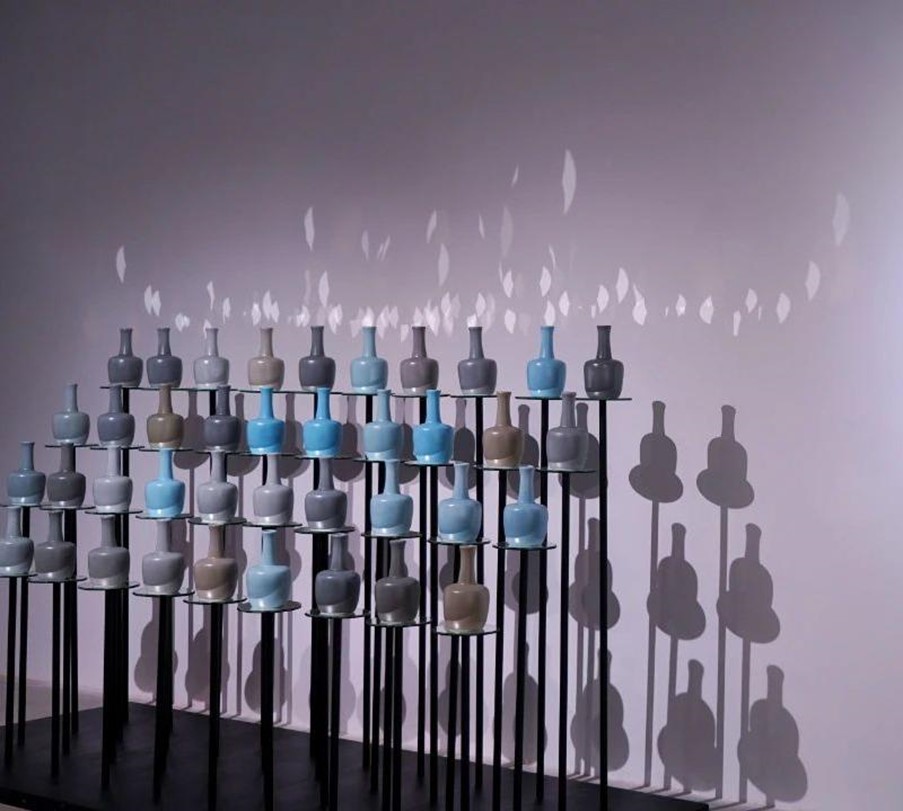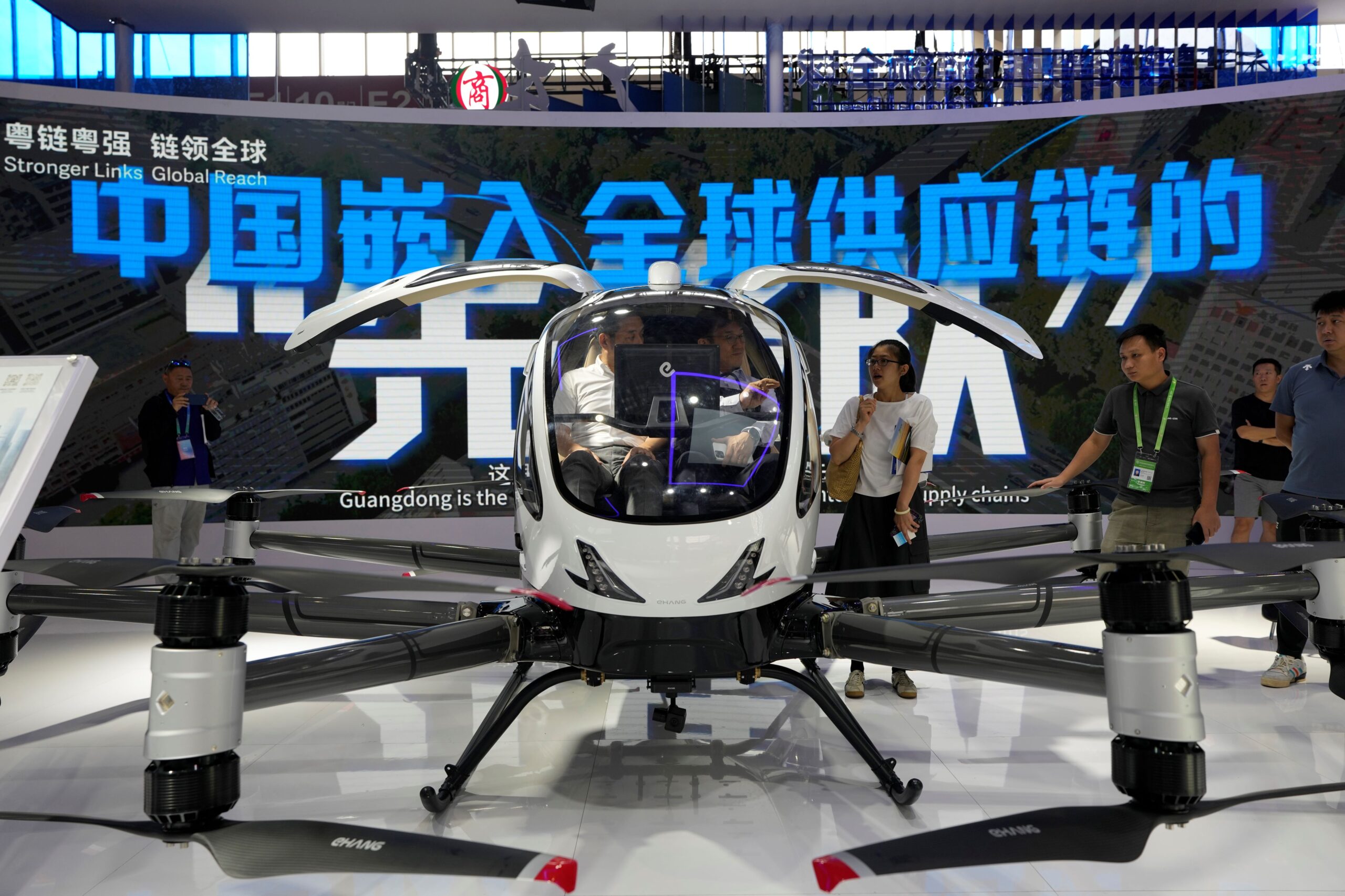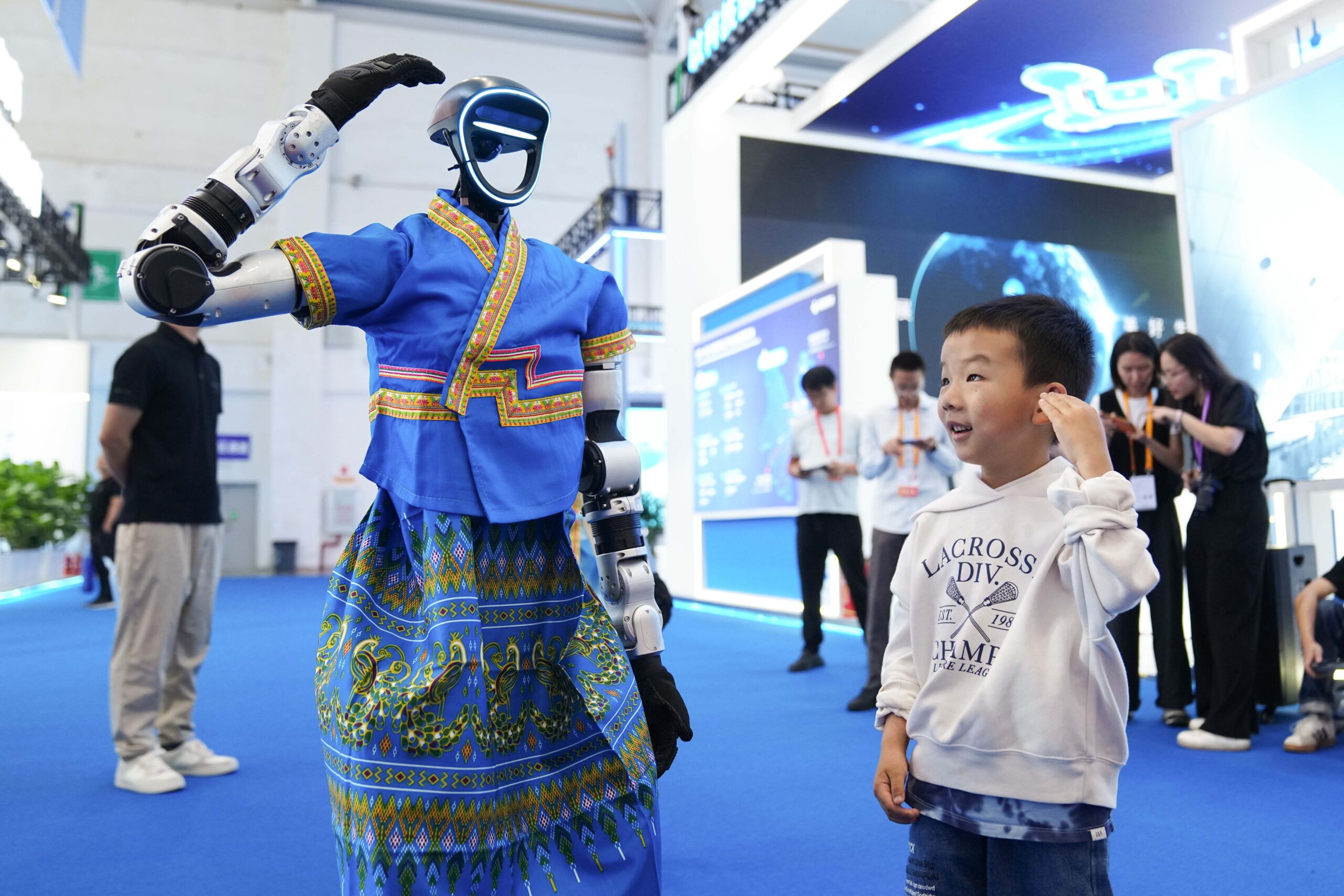Curator Jialiang Dou talks about her mission to interweave traditional crafts with modern realities.
Starting with a background in Geography Information Systems but a passion for art and culture, Jialiang Dou hasn’t had a typical route into curating. Now, she works to connect traditional crafts from China with modern curating in the UK – building a bridge between the two.
Modernity Rooted in Traditional Craftmanship
Jialiang Dou’s curatorial journey began in 2021 when she joined YDMD studio.
A studio dedicated to helping artists hold exhibitions, it is a British organisation but two of the co-founder’s Chinese heritage mean it regularly holds exhibitions in China as well as the UK.
Joining the YDMD team in China, her first exhibition was “The Extraordinary Ordinary: Contemporary Craft Exhibition” (2021). Held in AN+ Art & Design Center, it featured 39 artists offering a fresh perspective on China’s contemporary craft development and challenging the traditional dichotomy between craft and fine art.
This was a milestone for her: “It almost felt like a culture shock – it broke my imagination. It made me realise I can go beyond traditional craftwork. I realised I wanted to do more work like this.”
This was followed by the exhibition “Touching” (2021). Focusing on art created from daily life crafts, exhibited art included Jiuyang Liu’s “An 86-meter Copper Wire” which reimagined traditional ceramic forming techniques with metal.
Her time at YDMD proved influential in developing her curatorial style and goals.
“I want to challenge traditional perspectives on craft materials and how they can function as art. My approach is deeply influenced by McLuhan’s theory that ‘the medium is the message,’ emphasising that the medium of craft works themselves carry inherent meanings beyond their conventional uses.”
Through this lens, Jialiang has developed a unique curatorial vision that attempts to respect traditional craftsmanship while embracing contemporary modern art.
“Traditional crafts shouldn’t be confined to history. They should evolve with contemporary society while maintaining their cultural essence,” Jialiang explains.
A message that she hopes to convey to the audience through her exhibitions.

Jialiang’s Unlikely Road into Curating
The “Touching” (2021) exhibition in Nanjing is one Jialiang remembers clearly, as Nanjing is her hometown and the city where she studied.
Her bachelor’s degree in Geography Information Systems (GIS) from Nanjing University of Information, Science and Technology is a far cry from the curating work she now does, but the outcome is not surprising.
“This seems like quite a jump, going from programming maps to curating. However, art and culture have been my passions since I was young. I have loved calligraphy since I was small. It was my passion. It was my nature. But my parents insisted on getting a stable job,” she explains.
Adding: “In Chinese society, parents don’t believe art can give you a stable life.”
It was her parents that led Jialiang to study GIS and following graduation into the surreal world of Covid-19 China, found a job in programming maps.
“I lasted two months,” Jialiang explained frankly. “Sitting in an office. Everyone wearing masks. Staring at a screen. No one talking. I couldn’t bear to continue like that.”
Certain of her passion, she was lucky enough to start working at YDMD and applied to study for a master’s in the UK.
However, despite her passion her lack of formal experience meant she couldn’t apply for art or curating master’s – instead having to continue with GIS. She applied to Leeds after noticing modules in the cultural application of GIS.
“I went straight to my tutor at Leeds and said: How can I make GIS relate to culture and art?” Jialiang explained laughing.
Her determination paid off, for her dissertation she created a ‘London cultural property index’.
“I collected data from all of London’s boroughs about the venues relating to culture or art and how often people join art and culture activities. From this data, I used a GIS approach to analyse it, creating a map that visualised the popularity of culture in different areas of London. The logic is using GIS to help cultural development.”
“So, while studying this master’s, I was gradually able to change my whole studies towards culture and art through GIS.”

Bridges Bringing Traditional Crafts to Life
Jialiang also continued to curate alongside and since her studies, developing her experience further.
Curating exhibitions for YDMD in London and for other organisations back in China like the “Wa Mao” (2024) exhibition. It explored the cultural and artistic significance of traditional tile cats to modern society. This traditional craft from Yunna sees roof tiles adorned with decorative cats and creatures.
Since graduating, Jialiang’s curatorial focus has continued to evolve while remaining rooted in the idea of combining traditional craft with modernity. Now, she tries to bring Chinese cultural heritage artefacts to life through contemporary art and cross-cultural exchange.
She joked: “Rather than curating, I am building a bridge. The bridge can connect the two sides and inject new vitality.”
Three more recent curatorial endeavours showcase this.
The first is the “Our Other Sides” textiles exhibition in Dali, Yunnan province of China. A milestone in cross-cultural exchange, the exhibition brought a group of British artists to Dali. There they learned ethnic minority people’s indigo tie-dyeing techniques and felt-making techniques. The British artists then created a series of new artworks blending these ancient methods with their contemporary perspectives.
A highlight of Jialiang’s career came in August 2024 with the curation of the Yunnan Cultural Festival at Camden Market. Co-organised with Yi Crafts, this festival served as a vibrant platform for cultural exchange. It featured performances, digital art installations, and interactive exhibitions. Jialiang highlighted the torch art installation which recreated the traditional torch ceremonies of Yunnan’s ethnic minorities as an art piece.
It successfully introduced Yunnan’s rich cultural heritage to British audiences while demonstrating how traditional elements can be reimagined and revitalised in contemporary contexts.
For Jialiang “It was an open stage, so many locals and tourists visit Camden, people just passed by or walked by and they saw the festival. I felt so proud that Yunnan culture can be seen and felt in a totally different space. Despite it being just a random day in Camden, at that time, in that place, it was Yunnan.”
More recently, the “I AM MOSO”, exhibition co-curated in December 2024 with the Moso Museum of Yunnan showcases Jialiang’s continued effort to build bridges. The exhibition combined a movie screening, traditional artworks, talks, and interactive discussions to highlight how the unique culture and craftsmanship of the Moso people continue to exist in modern society.
Speaking to me at the exhibition, Jialiang explained: “Why does the UK need Yunnan culture, ethnic minority culture, heritage culture? My belief is that we need different perspectives in the UK creative industry. The bridges I try to build link UK creative industry with heritage cultures in China. I believe they can help each other.”
“It is about providing a completely different sound, appearance, environment and experience by building this bridge.”

Looking Forward to the Future
Looking ahead, Jialiang plans to bring Bai ethnic minority heritage crafts culture to the 2025 London Craft Week. The plan is to go beyond heritage crafts, to attract people as if it’s a contemporary exhibition.
As Jialiang makes clear: “For me, heritage isn’t fixed in the past, it can change and evolve. My goal is to create meaningful dialogues between heritage traditional craftsmanship and contemporary art practices.”
“These exhibitions serve as a bridge where cultural heritage crafts find new relevance in today’s world by meeting modern innovation.”
As for specific plans for London Craft Week, Jialiang isn’t giving anything away. You’ll have to wait and see.
If you like this article why not read: Zhong Feifei: The Sino-Congolese Star














